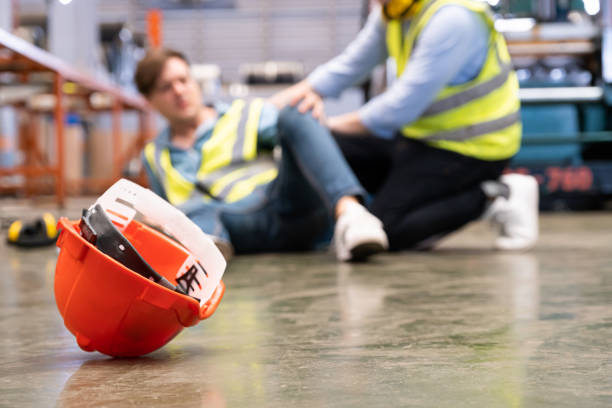Throughout any criminal trial, it is the job of both sides to present evidence in an effort to prove or disprove their respective claims. The type and amount of evidence provided will ultimately play a pivotal role in determining the outcome of the proceedings. When considering such a crucial matter, it’s important to understand precisely how proof works within the system — what kind of evidence is admissible? How does physical or circumstantial evidence impact a case? What new forensic techniques are being used by prosecutors today? In this guide, we will discuss everything you need to know about providing effective legal proof at your next trial – from understanding key principles surrounding admissibility and reliability all the way through leveraging cutting-edge investigative tools. No matter whether you’re defending someone against charges or arguing on behalf of a plaintiff, this guide has all the information you need to assemble compelling cases for each side!
Contents
What is Evidence and How Does it Prove Criminal Offenses
Evidence is the cornerstone of any criminal investigation, providing a trail of clues that can lead to a conviction or an acquittal. Essentially, evidence is anything that can be used to prove or disprove a fact in a case. This can range from physical proof like fingerprints, DNA samples, and weapons, to eyewitness testimony or even digital footprints. However, just having evidence doesn’t necessarily mean that a criminal offense has occurred; it’s all about how the evidence is used to build a case. Skilled prosecutors will use the evidence to construct a narrative that links together the facts, providing a compelling argument that either supports or dispels a particular interpretation of events. In this way, evidence serves as the backbone of a criminal trial, providing the framework necessary to arrive at a verdict. Reputable Colorado criminal defense lawyers note that understanding the nuances of evidence is essential in these cases, as even seemingly small details can have a large impact on the outcome. It’s all about evaluating the evidence through a critical lens to determine what is and isn’t admissible, as well as whether it can be trusted in the courtroom.
Types of Evidence in a Courtroom & their Significance
When it comes to a courtroom, evidence can make or break a case. But not all evidence holds the same weight. There are several types of evidence that can be presented, including testimonial, physical, documentary, and demonstrative. Testimonial evidence is given by witnesses or experts, while physical evidence refers to actual objects, such as weapons or clothing. Documentary evidence includes things like contracts or emails, while demonstrative evidence includes things like diagrams or animations. Each type of evidence serves a specific purpose, and understanding their significance is crucial in building a convincing case. Ultimately, it’s up to the judge and jury to weigh the different pieces of evidence and decide what carries the most weight.
The Role of the Prosecutor in Presenting & Using Evidence
The role of the prosecutor in presenting and using evidence is crucial when it comes to achieving a fair and just outcome in a courtroom. It’s the prosecutor’s duty to establish a case against the defendant using concrete evidence. This evidence can be anything from physical evidence, witness testimony, or even expert testimony. It’s the prosecutor’s job to present the evidence in a clear and organized manner so the jurors can make an informed decision. Additionally, the prosecutor needs to ensure that the evidence presented is not only relevant but also reliable, admissible, and trustworthy. Without the prosecutor’s ability to use and present evidence effectively, justice may not be served in a court of law.
The Role of the Defense Attorney in Contesting & Using Evidence
The defense attorney plays a crucial role in the contesting and using of evidence presented in court. Not only do they have the responsibility to protect their client’s rights, but they also have the duty to ensure that the evidence against them is admissible and reliable. This often involves conducting thorough investigations, scrutinizing the prosecution’s evidence, and presenting convincing arguments to challenge its validity. In some cases, defense attorneys may even bring in their own evidence to support their client’s claims. Overall, the role of the defense attorney is invaluable in the criminal justice system, as they work tirelessly to ensure that justice is served fairly and accurately.
Investigating Physical Evidence at the Scene of a Crime
When a crime occurs, investigators often turn to physical evidence to piece together what happened. From fingerprints to bloodstains, the evidence left at a crime scene can tell a story that speaks louder than any witness testimony. But the process of investigating physical evidence is not for the faint of heart. It requires a keen eye for detail, a steady hand, and an unwavering commitment to uncovering the truth. Investigators must carefully collect and analyze every piece of evidence, looking for patterns, anomalies, and any other clues that might help them solve the case. And while it can be a challenging and at times frustrating endeavor, there is nothing quite like the satisfaction of knowing that you’ve helped bring a criminal to justice.
Rules for Proving Intent with Circumstantial Evidence
Determining intent with circumstantial evidence requires a thorough understanding of the available clues and their possible meanings. Rather than relying on direct evidence of a person’s intentions, circumstantial evidence relies on drawing inferences from a set of circumstances that surround a particular event. Effective use of this type of evidence depends on how well those circumstances are understood and how credible the evidence is when viewed as a whole. It is a complex process that requires careful analysis and strong reasoning skills. Nonetheless, when used correctly, circumstantial evidence can be a powerful tool in proving intent and helping to bring justice to those who have been wronged.
The role of evidence in criminal proceedings is essential in ensuring that justice is served and the guilty party is convicted. By gathering information from the crime scene, prosecuting lawyers can craft a case of solid evidence against an offender and put away wrongdoers who have committed a criminal offense. Moreover, defense lawyers play an equally important part in presenting counter-arguments that may destigmatize the accused if there is weak or flimsy evidence. Ultimately, it all boils down to gathering as much evidence from the crime scene, the intentions and motives of culprits that may unanimously settle any disputes on conviction. No matter what transpires, there will always be a weight of proof both legally and morally burdened upon every person who has been alleged to commit a crime. As such, this large responsibility on our law enforcement and judicial systems must always be taken seriously in order to provide fair sentences that may accord with the public welfare.




